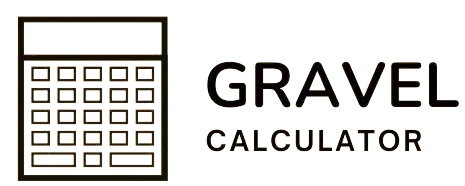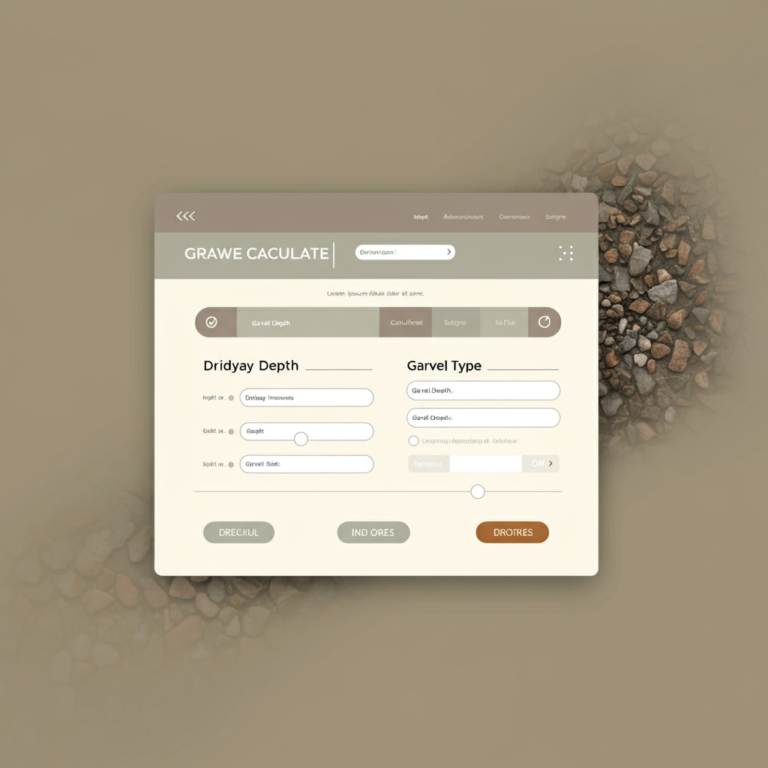Crushed Gravel Calculator
Crushed Gravel Calculator
Volume: cubic yards
Weight: tons
Planning a driveway, patio, or landscaping project? Calculating the right amount of crushed gravel is critical to avoid wasting money on excess materials or facing delays due to shortages.
Our crushed gravel calculator is your go-to tool for precise estimates, helping you determine the exact volume, weight, and cost needed for your project.
Whether you’re a DIY enthusiast or a professional contractor, this guide and calculator make planning simple, accurate, and efficient.
Why Use a Crushed Gravel Calculator?
A crushed gravel calculator saves time, reduces costs, and ensures accuracy for your project. Here’s why it’s essential:
Our calculator is optimized for calculate gravel for driveway, crushed gravel calculator for landscaping, and online calculator for crushed stone volume, making it a versatile tool for any project.
How to Use Our Crushed Gravel Calculator
Our crushed gravel calculator is user-friendly and designed for accuracy. Follow these steps to get instant results:
For example, for a 10×20 ft driveway with a 4-inch depth, select Crushed Stone, input dimensions, and the calculator will output approximately 2.47 cubic yards and 3.33 tons (based on 100 lbs/ft³ density). If the price is $50 per ton, the cost is around $166.50. This makes our tool ideal for calculate tons of crushed gravel needed or gravel needed for a 10×20 patio.
Calculation Formulas
Here’s how the calculator works behind the scenes:
- Volume (Rectangular): Length (ft) × Width (ft) × Depth (ft) = Cubic Feet
- Convert to Cubic Yards: Cubic Feet ÷ 27
- Convert to Cubic Yards: Cubic Feet ÷ 27
- Convert to Cubic Yards: Cubic Feet ÷ 27
- Weight: Cubic Yards × Density (tons/cubic yard, typically 1.3–1.5 for crushed gravel)
- Cost: Weight (tons) × Price per Ton
- Waste Factor: Add 5–10% to account for compaction and spillage.
These formulas ensure precision for free crushed gravel calculator for construction or crushed gravel calculator with price estimate.
Types of Crushed Gravel and Their Uses
Choosing the right gravel type is key to your project’s success. Below are common options, their densities, and best applications, optimized for landscaping calculator and aggregate calculator searches:
- Crusher Run (e.g., 21A, ABC Stone): A mix of crushed stone and dust (~1.4 tons/cubic yard). Ideal for:
- Driveway base layers
- Patio and walkway sub-bases
- Heavy-duty foundations
- 3/4″ Crushed Stone (e.g., #57 Stone): Uniform 3/4-inch pieces (~1.3 tons/cubic yard). Perfect for:
- Drainage (e.g., French drains)
- Decorative pathways
- Driveway top layers
- Pea Gravel: Small, rounded stones (~1.3 tons/cubic yard). Best for:
- Decorative landscaping
- Garden paths and walkways
- Playground surfaces (check safety standards)
- Decomposed Granite (DG): Fine, sandy aggregate (~1.2 tons/cubic yard). Suited for:
- Patios and seating areas
- Walking trails
- Bocce ball courts
- Limestone, Granite, Basalt: Vary by hardness and color. Limestone (~1.3 tons/cubic yard) compacts well; granite (~1.5 tons/cubic yard) is durable.
Factors Affecting Density
Practical Applications of Crushed Gravel
Our crushed gravel calculator supports a range of projects:
- Driveways: Use 4–6 inches of crusher run for the base and 2–3 inches of 3/4″ crushed stone for the top. Calculate needs with driveway gravel calculator.
- Patios: A 4-inch base of crusher run or 2–3 inches of pea gravel creates a stable, attractive surface. Ideal for gravel needed for a 10×20 patio.
- Drainage: 3/4″ crushed stone is perfect for French drains, ensuring effective water flow.
- Landscaping: Pea gravel or river rock adds texture to garden beds or pathways, optimized for crushed gravel calculator for landscaping.
- Construction: Crushed stone forms strong bases for roads or foundations, supported by aggregate calculator.
These applications make our tool versatile for calculate crushed gravel for construction or best crushed gravel calculator for DIY projects.
How to Measure Your Project Area
Accurate measurements are crucial for reliable estimates. Here’s how to measure for how much crushed gravel do I need for a walkway or other projects:
- Rectangular Areas: Measure length and width in feet. Convert depth (e.g., 4 inches = 0.33 ft).
- Circular Areas: Measure radius (distance from center to edge). Use π × Radius² for area, then multiply by depth.
- Irregular Shapes: Divide into smaller rectangles, triangles, or circles, calculate each, and sum the volumes.
- Recommended Depths:
- Pathways/Decorative Beds: 2–4 inches
- Residential Driveways/Patios: 4–6 inches
- Commercial Bases: 6+ inches
For example, a 10×20 ft driveway at 4 inches (0.33 ft) depth requires 10 × 20 × 0.33 = 66.6 cubic feet, or 2.47 cubic yards (66.6 ÷ 27). With a density of 1.35 tons/cubic yard, the weight is 2.47 × 1.35 = 3.33 tons.
Understanding Gravel Costs and Ordering
To budget effectively for crushed gravel calculator with price estimate:
- Pricing: Gravel is sold by ton or cubic yard. Bulk prices range from $30–$70 per ton, depending on type and location.
- Bulk vs. Bagged: Bulk gravel from quarries is cost-effective for large projects; bagged gravel suits small jobs but costs more per unit.
- Delivery: Check supplier delivery fees and minimum orders. Ensure site access for trucks.
- Suppliers: Research local quarries or landscape yards for competitive pricing.
Frequently Asked Questions (FAQs)
How many tons are in a cubic yard of crushed gravel?
On average, 1 cubic yard equals 1.3–1.5 tons, depending on gravel type and density.
What’s the best depth for a gravel driveway?
Use 4–6 inches total, with a 4-inch crusher run base and 2-inch top layer of 3/4″ crushed stone.
Can I use this calculator for sand or mulch?
Yes, adjust density (sand: ~1.2 tons/cubic yard, mulch: ~0.4–0.6 tons/cubic yard) for other materials.
How much does a ton of crushed gravel cover?
A ton covers ~80–100 sq ft at 2 inches or ~40–50 sq ft at 4 inches, depending on density.
What’s the difference between crushed gravel and crushed stone?
Crushed gravel may include naturally rounded stones that are crushed, while crushed stone is mechanically broken into angular pieces. Both are used similarly in construction and landscaping.
Why Our Calculator is the Best
Our crushed gravel calculator outperforms competitors by offering:
- Versatility: Handles multiple shapes (rectangular, circular, irregular) and units (feet, yards, meters).
- Cost Estimation: Includes price inputs for accurate budgeting.
- Mobile-Friendly: Works seamlessly on any device.
- Supplier Links: Connects to local gravel suppliers for convenience.
- User-Centric Design: Easy-to-use interface with clear results.

